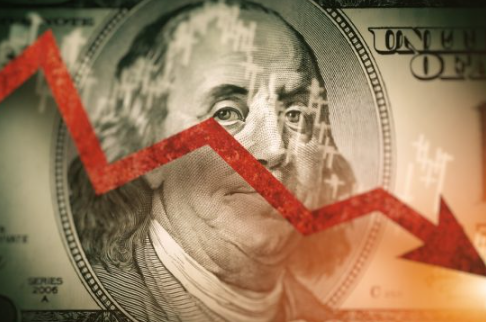Moody’s Ratings downgrade U.S debt, Spike in U.S Treasury Yields
The downgrade is attributed to the increasing costs associated with refinancing existing debt amid rising interest rates

Quick overview
- Moody's Ratings downgraded the United States' sovereign credit rating from Aaa to Aa1 due to rising debt refinancing costs and budget deficit challenges.
- The downgrade reflects a significant increase in government debt and interest payment ratios compared to similarly rated sovereigns.
- This change is expected to raise yields on US Treasury debt and may decrease investor interest in US stocks and other assets.
- The current fiscal deficit for the year has reached $1.05 trillion, marking a 13% increase from the previous year.
Moody’s Ratings downgraded the United States’ sovereign credit rating from its highest level, Aaa, to Aa1. The downgrade is attributed to the increasing costs associated with refinancing existing debt amid rising interest rates and the growing challenge of funding the federal government’s budget deficit.

The rating agency said, “This one-notch downgrade on our 21-notch rating scale reflects the gain in government debt and interest payment ratios over a decade to levels significantly higher than similarly rated sovereigns.”.
The decision to reduce the United States’ credit profile will, at the very least, increase the yield to purchase US Treasury debt to reflect greater risk. It may also reduce the appetite for owning US stocks and other assets.
Major credit rating agencies, however, still assign the United States the second-highest possible rating. In post-hours trading, the yield on the benchmark 10-year Treasury note increased 3 basis points to 4.48 percent
Moody’s, which has been a stalwart in maintaining the highest credit rating for US sovereign debt, now aligns the 116-year-old agency with its competitors. Fitch Ratings lowered the U.S. rating from AAA to AA+.
The AAA rating was changed to AA+. According to a statement from Moody’s analysts, “Successful US administrations and Congress have failed to agree on measures to reverse the trend of large annual fiscal deficits and growing interest costs.”.
“We don’t think the current fiscal proposals will lead to significant multi-year reductions in mandatory spending and deficits. Because of higher interest rates and more principal debt to finance, interest costs for Treasury debt have continued to rise, resulting in a massive budget deficit for the US.
The fiscal deficit for the year that started on October 1st is already $1.05 trillion, which is 13% more than it was a year ago. A portion of the imbalance was reduced last month thanks to tariff revenue.
- Check out our free forex signals
- Follow the top economic events on FX Leaders economic calendar
- Trade better, discover more Forex Trading Strategies
- Open a FREE Trading Account
